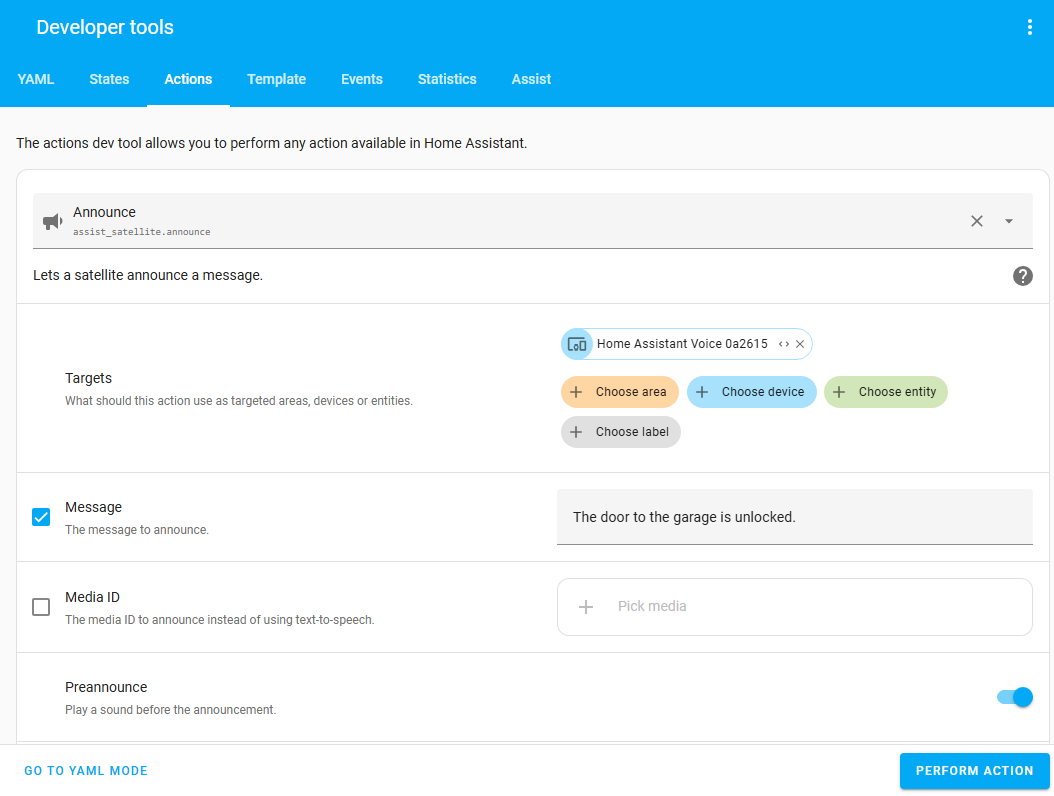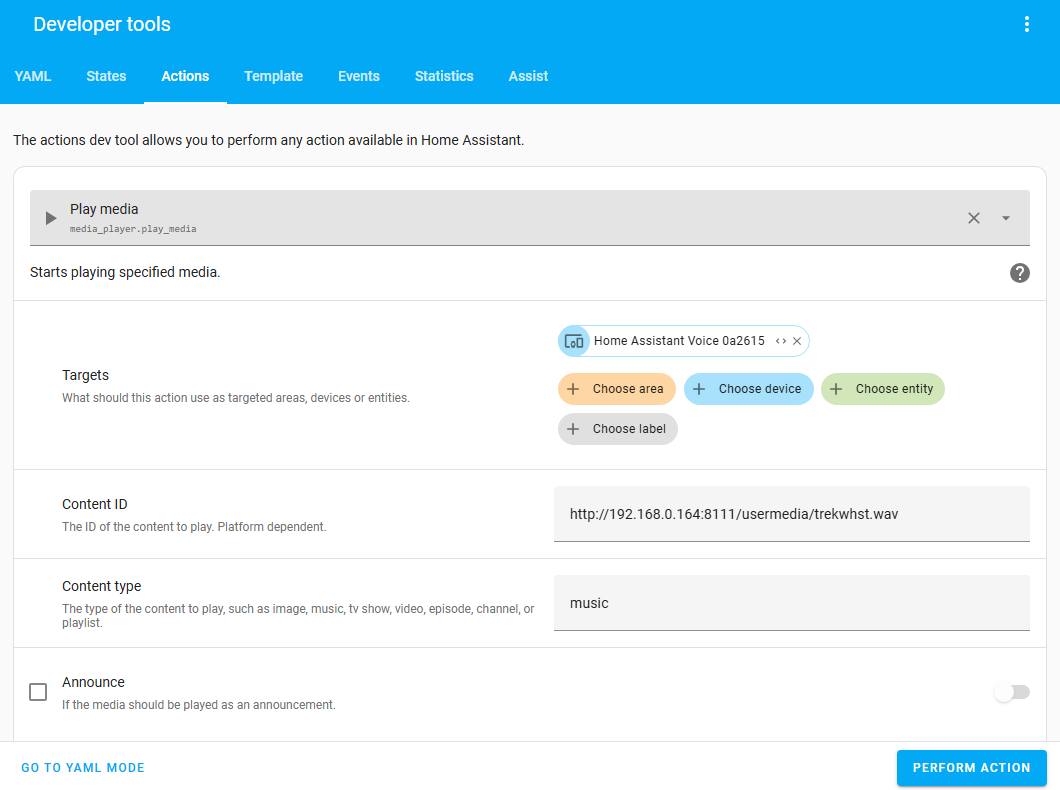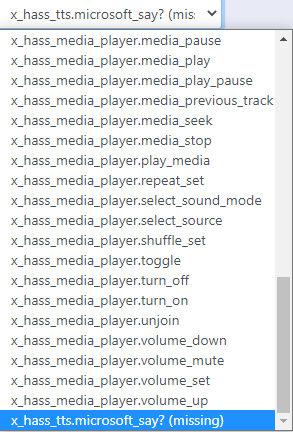Considering changing to HA - but what installation method?
-
Like @therealdb , I run HA in a docker container. I have HACS installed, and don't have any issue getting the add-ons I need installed. I have several other containers running on the same host, as you might imagine.
-
It depends... use docker as host or a hypervisor such as proxmox or esxi. On top of which you can also run an os with docker. I use both... esxi with homeassistant os (which usedls docker under the hood) because of backup options qith synology active backup for business - snapshot backup). And another with proxmox with vms and lxc container with docker inside that (easy to restart and not to run docker on proxmoxx directly). It all runs very wel for years. I would advise if not very knowledgeable with docker to run homeassistant os in a vm on a hypervisor.
-
Domoticz (used for zigbee integration) have been bothering me so much that i've been looking at HomeAssistant to replace it. Now that Z-way is moving in with an integration, its even more tempting..
But i don't like the idea of having it as an OS that I can't use for other things, and running the HASS Core in a docker seems to be somewhat reduced in terms of addons?
I realize that HASSOS is using docker for integrations or addons, but can I still use docker compose to set up my own dockers (i.e z-way, influx, grafana) there as well?
I guess i'm getting old, change is difficult!

@perh said in Considering changing to HA - but what installation method?:
Domoticz (used for zigbee integration) have been bothering me so much that i've been looking at HomeAssistant to replace it. Now that Z-way is moving in with an integration, its even more tempting..
But i don't like the idea of having it as an OS that I can't use for other things, and running the HASS Core in a docker seems to be somewhat reduced in terms of addons?
I realize that HASSOS is using docker for integrations or addons, but can I still use docker compose to set up my own dockers (i.e z-way, influx, grafana) there as well?
I guess i'm getting old, change is difficult!

Z-way with an integration? Where did you find that?
-
I run HA inside Docker on my Synology NAS along with MSR, Grafana and InfluxDB without any issues. Also have a few integrations such as HACS, Vera Plus (Z-Wave Devices), Rachio and MyQ running without major problems. Having all the CPU and memory the NAS can offer and how (Synology) Docker manages the resources made it easy for me to go that route.
-
@sender said in Considering changing to HA - but what installation method?:
Z-way with an integration? Where did you find that?
The first integration step is done as far as I can see, so i guess its in line for the next HASS version?
After some tinkering i've gotten a docker up with HASS core on my "production" unit, and connected it to MSR.
I also added the Configurator/file editor docker so I can edit HASS and Reactor config from the web UI without firing up Putty.
MSR, Z-Way and File editor is added as iFrames, so now i can remove some bookmarks from my browser.
Tibber and Xiaomi MI integration dropped right in at first attempt.Have to say that this looks very promising!
-
@sender said in Considering changing to HA - but what installation method?:
Z-way with an integration? Where did you find that?
The first integration step is done as far as I can see, so i guess its in line for the next HASS version?
After some tinkering i've gotten a docker up with HASS core on my "production" unit, and connected it to MSR.
I also added the Configurator/file editor docker so I can edit HASS and Reactor config from the web UI without firing up Putty.
MSR, Z-Way and File editor is added as iFrames, so now i can remove some bookmarks from my browser.
Tibber and Xiaomi MI integration dropped right in at first attempt.Have to say that this looks very promising!
I am running HA Supervised in a Docker container on Debian on a small i5 Lenovo. Installed HACS without any problems, there are a few guides on how to do it.
It has been stable so far anyway.The only concern I have is that it seems as if the HA developers want to push users away from the Docker way of running HA over to the HA OS way.
What this means is that the requirement now is more or less a vanilla Debian with only HA in Docker. If you do not stick to this the installation becomes "unsupported".
My installation was "supported" but now I can see that it has become "unsupported" due to the Portainer installation.
My idea was to add e.g. MSR in Docker at some point in time, but maybe the Docker route will be a dead end for HA?It could be so that a HA OS installation on a VM, e.g. in Proxmox is the better choice in the longer run. The other option to only install HA OS on e.g. a fairly modern NUC seems a waste of resources to me since you cannot use it for anything else then.
I tested Proxmox and it seemed quite nice, the problem was that the old Athom PC I used was too old for the combination Proxmox/HA. So if I will go down that route I need to reinstall my i5 from scratch. Hmm.
To be honest I think it is a bit annoying that HA has complicated the setup/installation so much, not sure why they did that.
-
I saw the problem HA is solving with dockers in Domoticz.. plugins that require different versions of packages can't co-exist and tears the system down.. To me it still seems weird to move to the "OS with nothing else on it" route though..
I run it in a docker now next to several other dockers, works well.
-
Same as @PerH for me. I’ll not install anything bare metal until I’m forced too. This is a better plan from recovery and migration point for views, too. I’m regularly doing a backup of configuration to my nas (hourly and daily) and in case of a disaster I’m sure I’ll be up quickly.
-
Same as @PerH for me. I’ll not install anything bare metal until I’m forced too. This is a better plan from recovery and migration point for views, too. I’m regularly doing a backup of configuration to my nas (hourly and daily) and in case of a disaster I’m sure I’ll be up quickly.
Just for fun I decided to test and setup Home Assistant OS on two virtual machines.
The first is a HA OS VM on a Windows 10 i5 NUC with VirtualBox. Quite easy to setup, some information can be found on the HA website, I also looked at this guide.
The second VM I installed on an old Core2 PC. I installed Proxmox and then HA OS in a VM. A bit more complicated to setup but there is a good guide here. The Core2 seems ok for this setup, in comparison with the old Athom PC that did not do the job.
Both installations seem to work ok. I will test them later on with a backup of my production setup to see if that changes anything.
The Windows installation got corrupted when I had to hard reset the PC. As expected HA OS did not like that, however quite easy just to delete the VM and set it up again. I only had a test installation of HA on the VM, but as always a backup of HA is a good idea.I have not tested any USB devices (e.g. Zwave stick) since I do not use it. As far as I have understood it both should work with USB devices.
What to use? The plan is to stay with my current Debian/Docker setup since it has so far been very stable. If the HA devs continues to move away from the Docker installation I may need to reconsider this.
The other VM's could be an option for test rigs I think.
I like the Proxmox setup, it feels quite solid and is built for VM. The Windows setup feels a bit more uncertain with the MS Windows 10 automatic updates etc. -
A year later, I find this thread, and wanted to report that I too have installed HA under Docker on my Synology NAS, and the process was like butter!! Seems with every revision "they" make HA easier to install and maintain. It's like having your own candy store! Can't wait to give it a serious trial.
-
Just for fun I decided to test and setup Home Assistant OS on two virtual machines.
The first is a HA OS VM on a Windows 10 i5 NUC with VirtualBox. Quite easy to setup, some information can be found on the HA website, I also looked at this guide.
The second VM I installed on an old Core2 PC. I installed Proxmox and then HA OS in a VM. A bit more complicated to setup but there is a good guide here. The Core2 seems ok for this setup, in comparison with the old Athom PC that did not do the job.
Both installations seem to work ok. I will test them later on with a backup of my production setup to see if that changes anything.
The Windows installation got corrupted when I had to hard reset the PC. As expected HA OS did not like that, however quite easy just to delete the VM and set it up again. I only had a test installation of HA on the VM, but as always a backup of HA is a good idea.I have not tested any USB devices (e.g. Zwave stick) since I do not use it. As far as I have understood it both should work with USB devices.
What to use? The plan is to stay with my current Debian/Docker setup since it has so far been very stable. If the HA devs continues to move away from the Docker installation I may need to reconsider this.
The other VM's could be an option for test rigs I think.
I like the Proxmox setup, it feels quite solid and is built for VM. The Windows setup feels a bit more uncertain with the MS Windows 10 automatic updates etc.@ArcherS said in Considering changing to HA - but what installation method?:
I have not tested any USB devices (e.g. Zwave stick) since I do not use it. As far as I have understood it both should work with USB devices.
From all I can find on the Web, it seems that getting ZW/ZB dongles to work with the Docker version of HA remains problematic in 2023, particularly if Docker is running on something like a Synology NAS (on DSM7+), where topics like "USB Drivers" and/or "TTY Passthrough" rear their ugly head.
It sounds doable, but not nearly as straightforward as the OS or VM installs. So be mindful of this potential roadblock if you aim to attach USB sticks. Breadcrumbs I've discovered along the way: Add 'packages.synocommunity.com' as a source in Package Center so that your Syn NAS can install various DSM-specific 3rd party apps. Specifically, the SynoKernel USB Drivers.
-
HA is a very big piece of software. The current stable branch docker image is 1.6GB. I chose to run it on dedicated hardware; that just seems too large to saddle the NAS with. This makes the USB issue almost moot. I run ZWaveJS UI in a separate docker container, and use the recommended serial port aliasing (through
/dev/serial/by-id/...). Both run underdocker-compose. It's sane. No issues.





